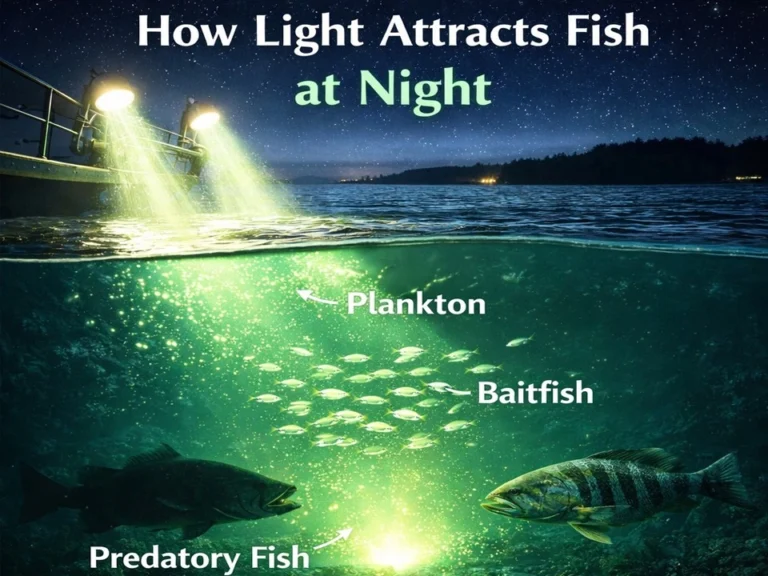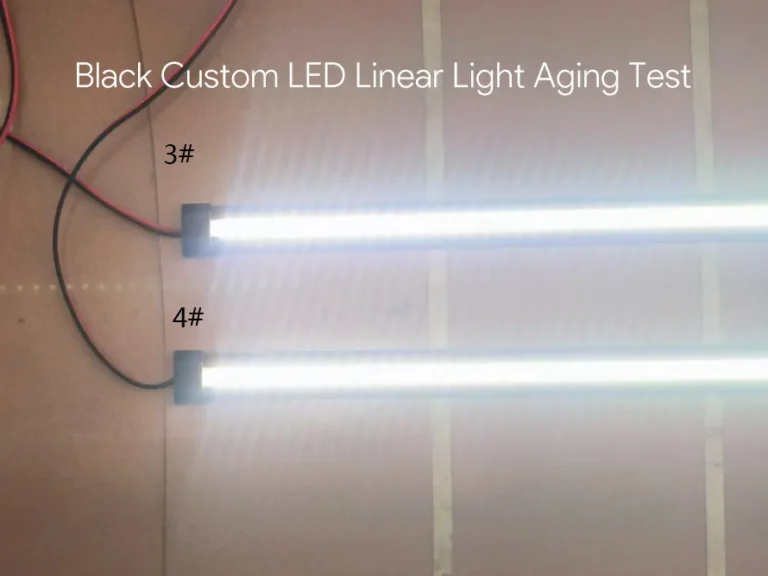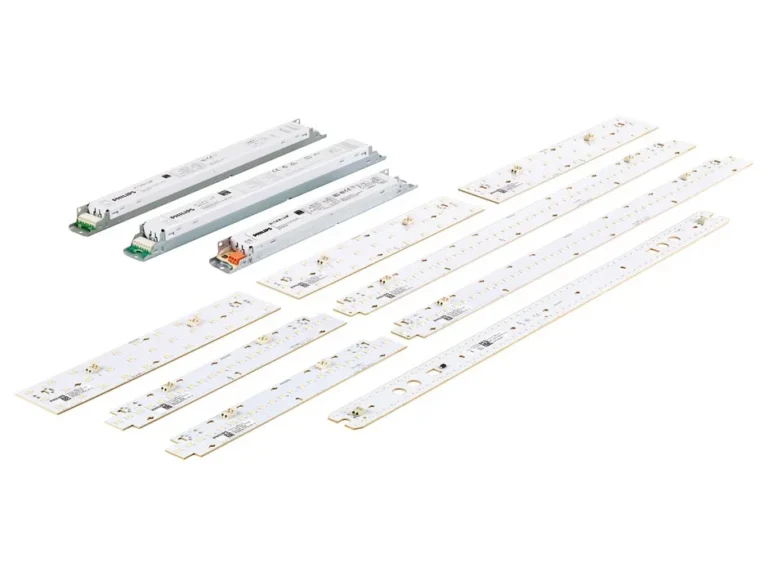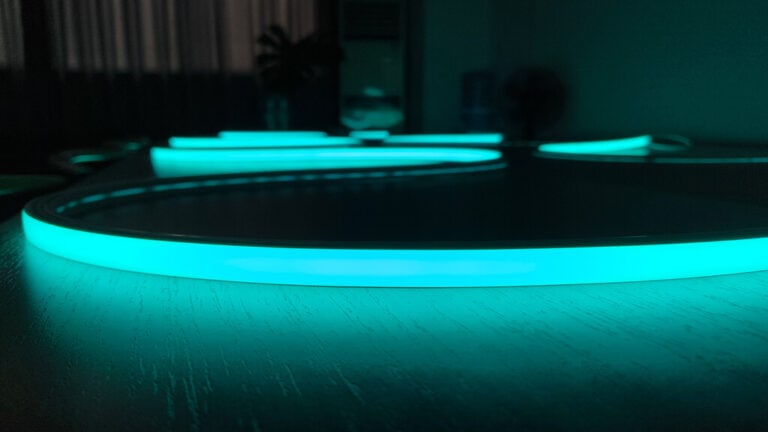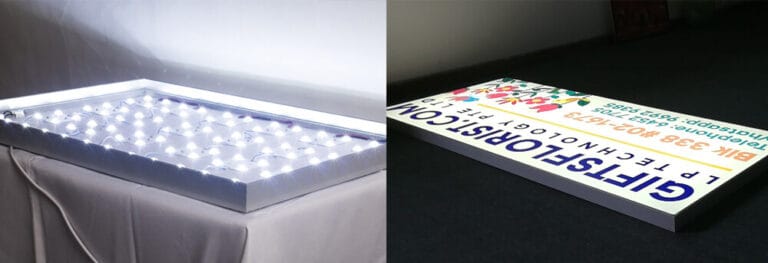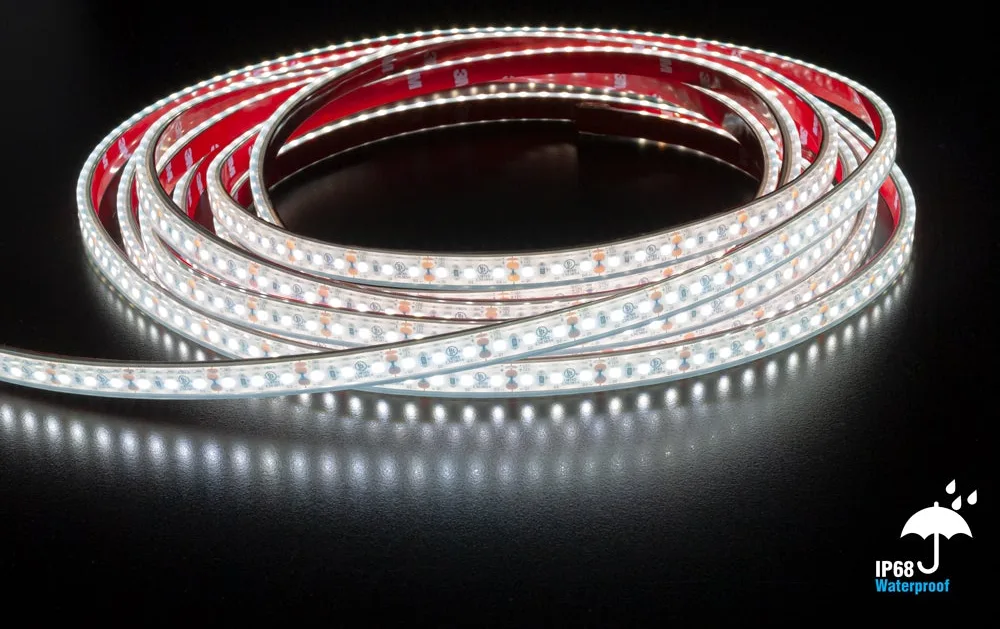
Choosing the Correct Outdoor LED Strip Light
LED lights can be categorized into three primary types based on their environmental suitability: non-weatherproof, weatherproof, and waterproof.
Non-weatherproof LED lights are designed exclusively for indoor use. In contrast, weatherproof LED lights are suitable for outdoor applications, while waterproof LED lights are specifically intended for illuminating areas such as pools and regions close to water.
When planning to install LED strip lights, it’s essential to consider the Ingress Protection (IP) rating. This rating indicates the level of protection an LED light has against dust and water, helping you avoid potential issues.
For outdoor strip lighting installations, it’s advisable to choose lights with an IP rating of 65 or higher. To determine the most suitable rating for your LED project, consult an IP rating chart for guidance.
Features of Waterproof LED Strip Lights
High waterproof level: Waterproof LED light strips are treated with a special waterproof process and can usually reach a higher waterproof level, such as IP65, IP66, IP67 or even IP68. This means they can function well in humid, watery, and even underwater environments without being affected by moisture.
Strong weather resistance: Due to its excellent waterproof performance, waterproof LED light strips can operate stably in various harsh weather conditions, such as rainy days, foggy days, etc.
Good flexibility: The waterproof LED light strip has strong flexibility and can be folded and bent, making it easy to install on objects of various shapes and structures.
Easy installation: The installation of waterproof LED light strips is relatively simple and can be cut and spliced as needed to adapt to different installation environments and length requirements.
Waterproof LED light strips are widely used in home decoration, outdoor landscape lighting, building exterior wall decoration, path indication and other fields. They not only provide lighting functions, but also add beauty and artistic atmosphere to the environment.
IP Rate of Outdoor LED Strip Lights

The larger the number, the stronger the waterproof performance: for example, IP65 means that the light bar can prevent the intrusion of sprayed water and is suitable for outdoor environments; while IP68 means that the light bar can work normally underwater for a long time and is suitable for harsher underwater environments. environment.
The IP index of a waterproof light strip is closely related to its production process and material selection: for example, a waterproof light strip implemented using all-inclusive solid silicone extrusion can have a waterproof rating of IP67 or higher; while a waterproof light strip using surface nano-coating technology Light strips can also achieve a higher waterproof level.
The IP index of a waterproof light bar is one of the important indicators of its product quality: when choosing a waterproof light bar, users can choose products with an appropriate IP index based on actual needs and installation environment to ensure their stability during use. and reliability.
What Brightness Do You Want Outdoor LED Strip?
Outdoor LED light strips are rated in lumens per meter. So choosing the right intensity also depends on your specific lighting needs. General outdoor LED strip lights are designed for the following three lighting purposes.
Accent lighting: 150–300 lumens per meter for subtle decorative lighting.
Task lighting: 400–600 lumens per meter for functional areas such as patios and pathways.
General lighting: 700–1000 lumens per meter for overall lighting of larger areas.
How to Choose the Color Temperature of Outdoor LED light strips?
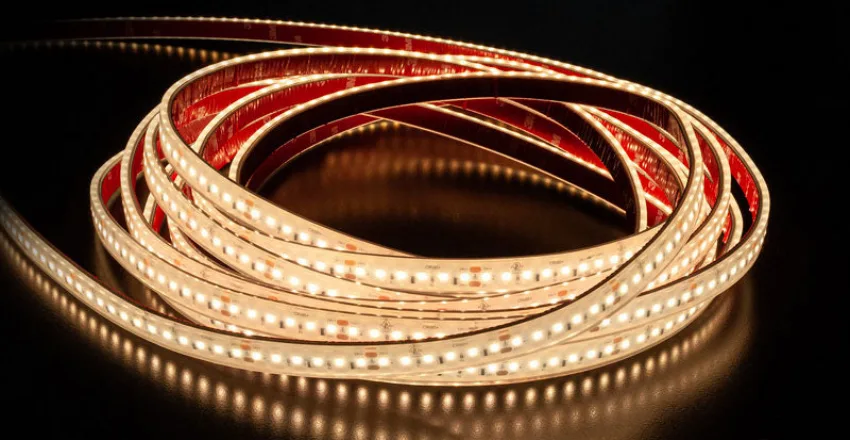
Once we have determined the object to be illuminated and the brightness, we can next confirm the color temperature of the lighting. Because different color temperatures of LED light strips affect the atmosphere of the outdoor space:
Warm white (2700K-3000K): creates a comfortable and pleasant atmosphere, perfect for leisure areas.
Neutral white (4000K-4500K): provides balanced lighting, suitable for general outdoor use.
Cool white (5000K-6500K): provides bright and clear lighting, perfect for security and task lighting.
Where to Install LED Strip Lights Outdoor?
Once we have confirmed the lighting and color temperature, we need to confirm the location of the waterproof outdoor light strip. So that we can confirm the voltage and power supply of the outdoor LED light strip. Outdoor LED light strips usually have two safe voltages of 12 V and 24 V.
The following are the places where outdoor LED strip lights can be installed for your reference.
Gardens and paths: used to illuminate walkways and highlight garden features.
Deck and patio: create a comfortable and pleasant atmosphere.
Fences and walls: add a decorative touch to borders and structures.
Swimming pools and ponds: provide underwater lighting and enhance the beauty of water features.
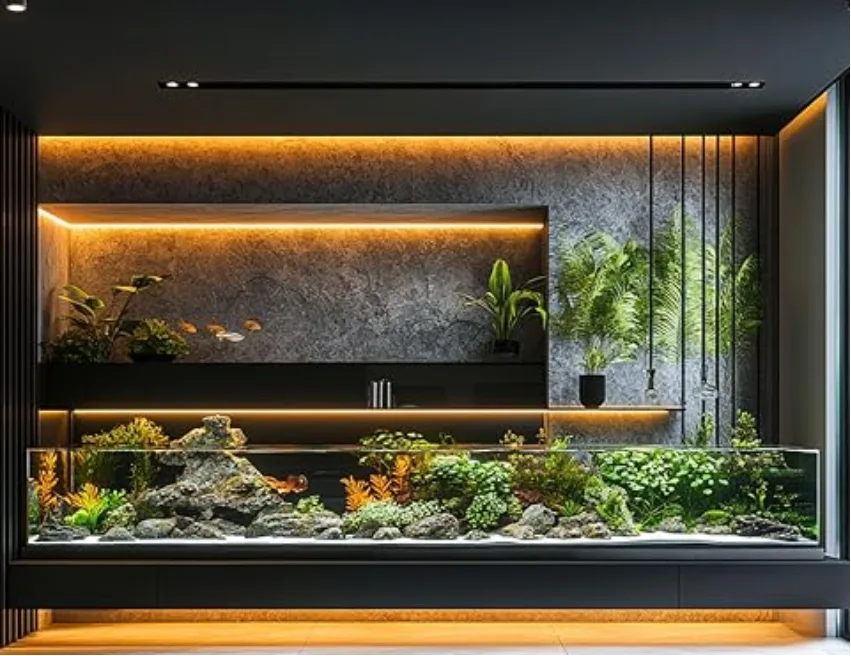
What Materials will the Outdoor LED Light Strips be Mounted On?
LED strips have 3M adhesive on the back and are generally mounted on edges and curves. So, a smooth surface is important to ensure that the adhesive on the LED strip is compatible with the material.
Also, adhesives can easily fail, especially in hot, humid or wet environments. This can be paired with mounting clips that clip onto the LED strip and screw it into place.
Consider the materials you will be mounting the LED strip:
Wood: Commonly used for decks, fences and gazebos.
Metal: Suitable for railings, gates and outdoor furniture.
Concrete: Used for driveways, paths and building exteriors.
Plastic: Commonly used for garden decorations and outdoor fixtures.
How Many Meters Outdoor LED Strip Lights Do You Need?
Determine the length of the LED strip you need by measuring the area you plan to illuminate. The cut lengths for 12V and 24V are different, and the general length is 5 meters per roll.
You can also measure the exact length of the LED in advance and customize the length of the LED strip. This way you don’t have to cut it again. But remember to leave a little extra size, because there are turns and corners that need attention.
What’re the Benefits of Waterproof LED Strip Light
Waterproof light strips usually have IP65, IP67 or even higher waterproof ratings, which means they can maintain normal operation in humid and watery environments, effectively preventing moisture intrusion and extending their service life. Whether it is indoor humid environments (such as bathrooms, kitchens) or outdoor environments (such as pools, bridges, tunnels, etc.), waterproof light strips can provide reliable lighting solutions.
The LED light source itself is energy-saving and environmentally friendly. The waterproof light strip does not produce harmful substances during the lighting process, which meets the requirements of green lighting.
Waterproof light strips are usually powered by safe voltages such as DC24V, which eliminates the risk of high-voltage electric shock and improves the safety of use.
Waterproof light strips can be surface-mounted or embedded in various substrates, such as walls, ceilings, etc., to meet different installation needs.
Maintenance and Care for Longevity
Outdoor LED strip lights need regular cleaning to maintain brightness. Dust and dirt can accumulate over time. Use a soft cloth to wipe the lights gently. For stubborn dirt, a mild soap solution works well. Avoid harsh chemicals that might damage the coating. Clean lights ensure optimal performance.
Inspect your LED strip lights regularly. Look for signs of wear or damage. Check for cracks in the silicone coating. Examine connections for any loose wires. Address issues promptly to prevent further damage. Regular checks help extend the lifespan of your lights.
Seasonal Adjustments
Extreme weather can impact outdoor lighting. Consider using protective covers during storms. Move removable lights indoors if possible. Secure fixed lights with additional fasteners. Proper protection ensures lights withstand harsh conditions.
Store removable LED strip lights properly during off-seasons. Coil the lights neatly to avoid tangling. Use a storage box to keep them dust-free. Store in a cool, dry place to prevent moisture damage. Proper storage keeps lights ready for the next season.
FAQ
Waterproof LED light strips usually have a longer life. The specific life span depends on many factors, such as lamp bead quality, driver circuit, heat dissipation design, and usage conditions. Generally speaking, the lifespan of high-quality waterproof LED light strips can reach tens of thousands of hours, or even higher. For example, some products claim that their lifespan can reach 26280 hours (that is, about 3 years) or longer. However, it is important to note that this is only a rough estimate and actual lifespan may vary depending on usage environment and maintenance.
Most waterproof LED light strips support the cutting function. Users can use scissors or special tools to cut at the position marked with the “scissors” mark according to the size and shape of the installation space to obtain the light strip of the required length. However, it should be noted that when cutting, make sure not to cut it off or wrongly, so as not to affect the use effect of the light strip.
Regarding the best brand of waterproof LED light strips, there is no definite answer to this question, because products of different brands vary in quality, performance, price, etc., and each user’s needs and preferences are also different. However, according to market feedback and user evaluations, some well-known brands such as Philips Hue, LIFX, and Govee, etc. have high visibility and good reputation in the field of waterproof LED light strips. Products from these brands usually have a long service life, stable performance and reliable quality assurance.How do you repair damaged waterproof LED strip lights?
First, check if the power supply is working and inspect the connections of LED strips for any looseness or damage. If you find a bad connection, reconnect or solder it. Carefully identify any unlit spots or damaged LED chips. Some LED strips allow for segment testing, so check each segment individually to find the fault.
For removable chips, use appropriate tools like a heat gun or soldering station to replace the damaged ones, taking care not to harm the circuit board. Ensure you select replacement LED chips that match the original specifications and are well-soldered.
If the entire LED strip is not lighting up or is flickering, the issue might be with the controller or driver. Verify the controller is powered and correctly set. If it seems fine, the driver might be faulty and will need replacement.
If these steps do not resolve the issue or if the LED strip is significantly damaged, consider consulting a professional for repair services or replacing the entire LED strips.
Avoid keeping LED light strips in very hot or cold environments for extended periods, as this can impact their performance and lifespan.
Enhance the heat dissipation of waterproof LED light strips by using materials like aluminum heat sinks to prevent overheating.
Choose high-quality waterproof LED light strips made from durable materials. These typically offer better temperature resistance and a longer lifespan.
Ensure the area where you’ll attach the LED strip is clean, smooth, and free of grease and dust. Use detergent or alcohol to clean it, then let it dry completely.
Opt for stronger double-sided tape, particularly those made for LED strips, as they usually offer better adhesion.
Some double-sided tapes need warmth to stick well. Use a hair dryer to lightly warm the tape before pressing it firmly onto the surface.
If tape isn’t sufficient, consider using special glue made for LED strips. Choose one compatible with your strip type and surface, and follow the application instructions.If all else fails, think about using brackets, clips, or additional support structures for mounting.
